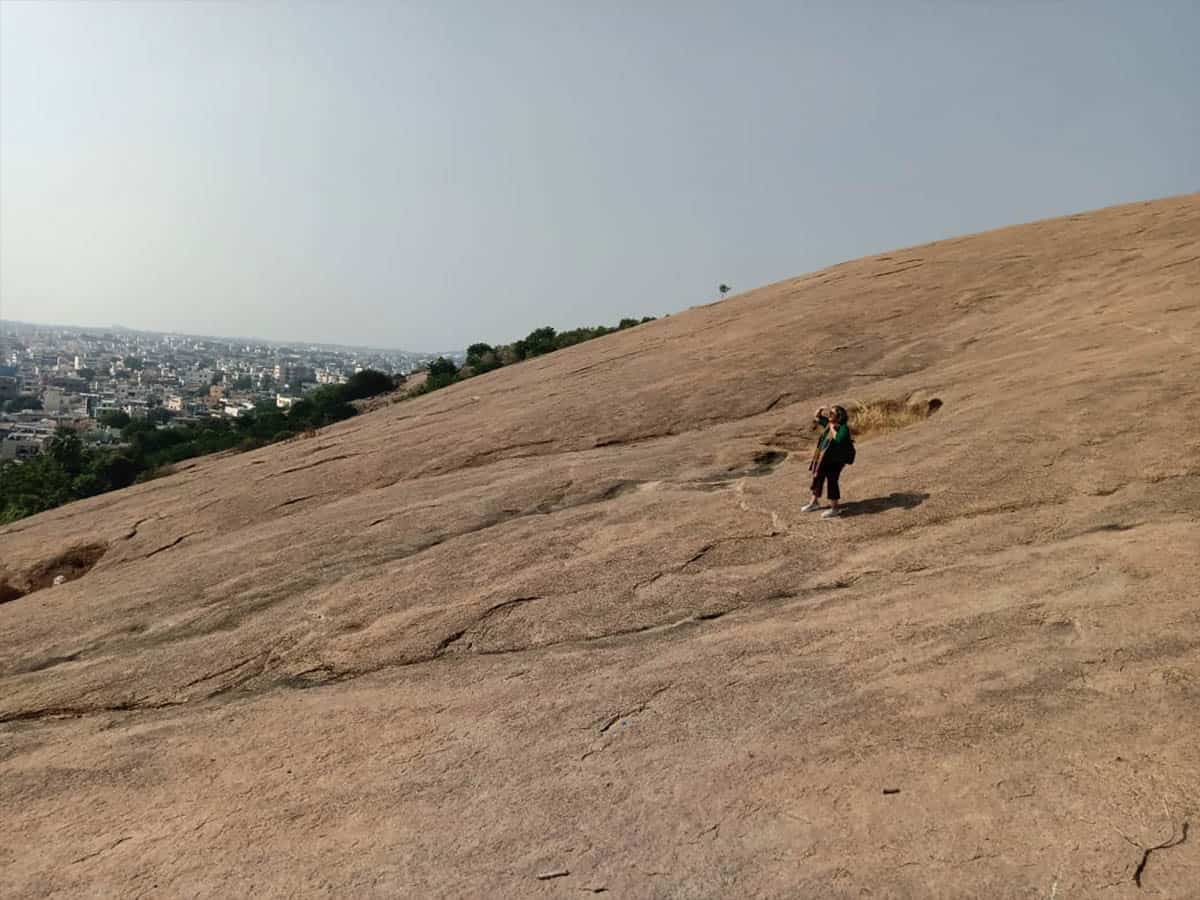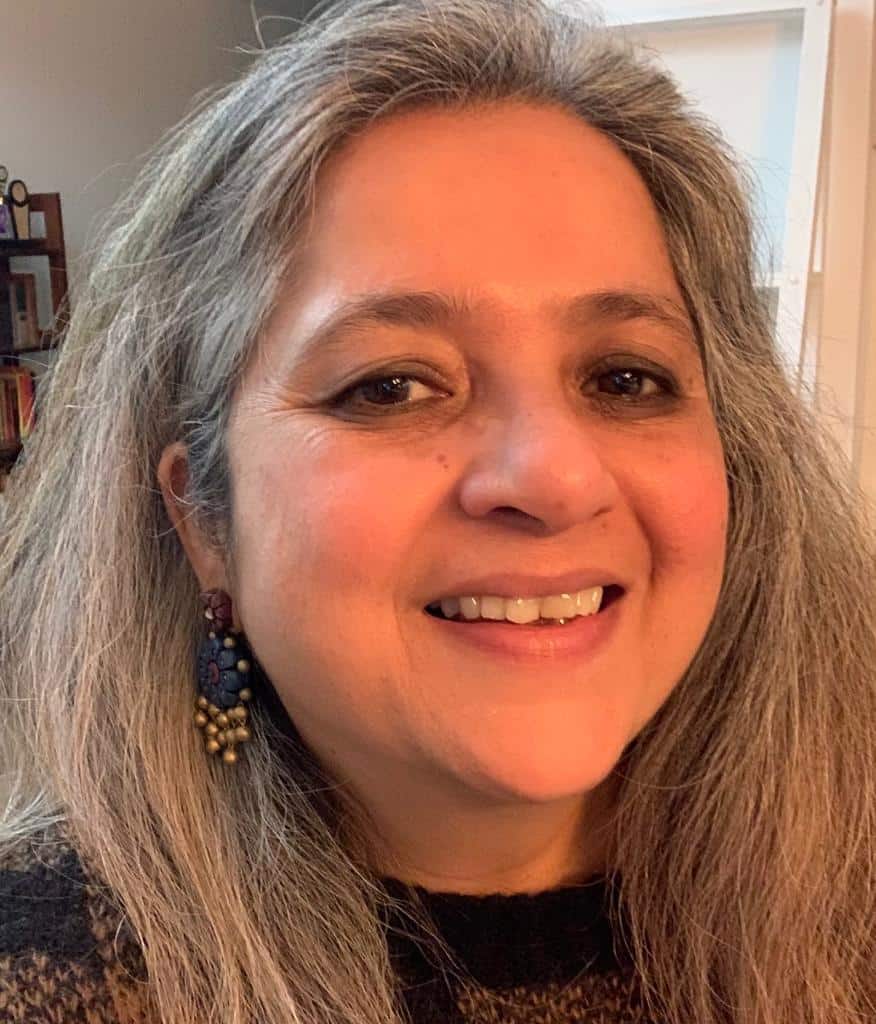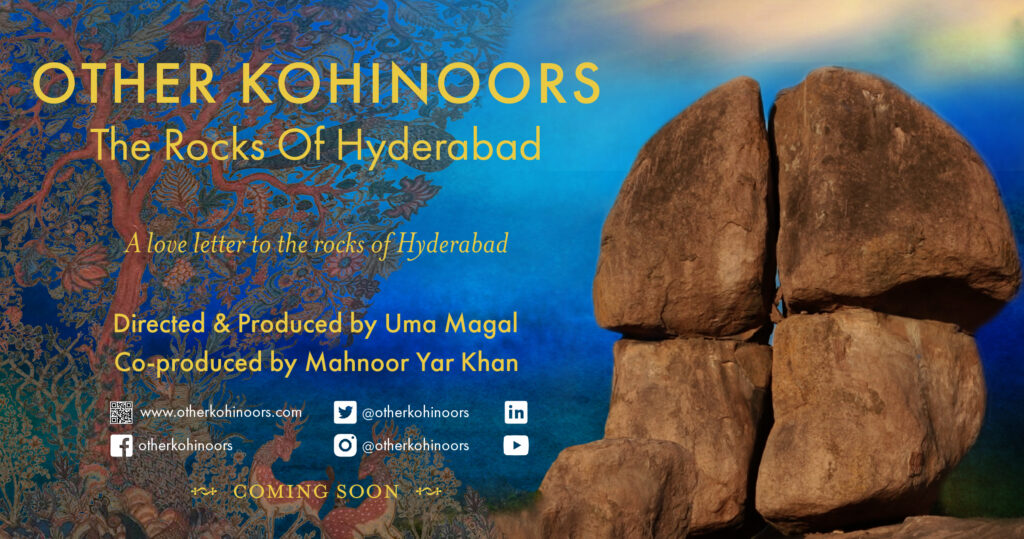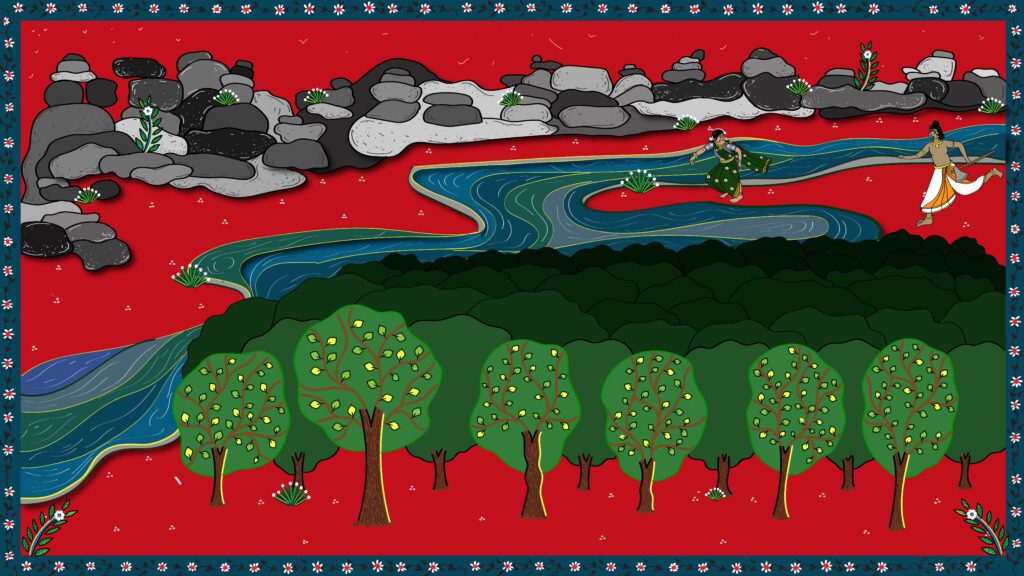
City-based writer, director, former faculty of Film and Media Studies, San Francisco State and Temple Universities, Uma Magal talks about her film, Other Kohinoors, a stirring reflection on the destruction of ancient rock-formations of Hyderabad. Co-produced by Mahnoor Yar Khan, the film is anchored in the concept of ‘solastalgia’. It captures heart-breaking visuals of shattered rocks— of a region which is culturally, socially, geographically, and spiritually dependent on the widespread rockscapes.

Eminent film director Narsing Rao says, “It is like a Kurukshetra without blood.”
The film raises questions and dialogues on the future of the remaining rock-testimonies—Hyderabad’s ‘aesthetic identity’ and ‘ecological sustenance’.

Jhilam Chattaraj: It’s wonderful to see Other Kohinoors’win the heart of Hyderabad. What has been the most popular reaction?
Uma Magal: A sense of emotional connection with people. A sense of wonder at how beautiful the film is and how beautifully the city culture embraces the rocky landscape. And tears when audiences realize what we are losing, the enormity of the treasure that we have been blessed with by Mother Nature. As Ramesh Prasad garu who kindly gave us Prasad’s Imax for our premiere said, “It is hard to make rocks interesting but you have done a good job”.
JC: Indeed! The film inspired me to write a couple of poems, especially on Khajaguda Hills. I would love to know your memories of the rocks of the city.
UM: Many friends, many picnics, and walks on the rocks especially University of Hyderabad where I studied. The bus trip from the old campus at Golden Threshold to the main campus in Gachibowli was a magical one; with trees, unfolding rockscapes, farms, wildflowers… Hoshang Merchant, our famous and beloved city poet, has written a beautiful poem about this.
JC: Two women, two Hyderabad-i, Uma Magal, and Mahnoor Yar Khan—do you think your vision of nature as a woman has influenced the rhetoric of the film?
UM: I think the message of the film itself is universal and gender-free. As women, our approach was an inclusive one. We wanted to be companions to the audience, not an authority telling them things. It was natural for us to avoid any superior style information given via an all-knowing narrator as is the norm in usual documentaries. We went more for a celebration of culture around the rocks and a sense of wonder in the face of their magnificence. And we wanted an energetic, fun style that would connect the audience with us. The motto is: the less you preach the more everyone will learn,
JC: True! Do you recall the defining moment when you decided to make the film?
UM: Yes. When my children were small our colony parents would take them onto the rocks. The Society to Save Rocks did some lovely rock walks and the Greater Hyderabad Adventure Club had some wonderful bouldering sessions that we took the children on. Then, in front of our eyes, all the rocks were gone, in the course of the development around Gachibowli. The children were so upset and sad. So, the film started as a way to talk about all this with the children. But as Mahnoor and I researched, it grew into a bigger and bigger project. The core idea is still to have a conversation about our rocks.
JC: Who is your favorite filmmaker? How did the essence of cinema influence your life, your aesthetics?
UM: It is impossible for me to name even my top ten favorite filmmakers. I deeply love cinema of different cultures and countries. I believe and I show and teach this to my students too, that the best films teach you how to live, nothing less.
JC:Other Kohinoors is rich with literary references— there’s anger and pain—how did you balance between beauty and the bleariness of truth?
UM: Yes, it’s been a split-personality journey for sure! On the one hand, is the grief and sadness around the lost rockscapes; and on the other hand, the joyful discovery of the wonderful ways in which our culture showed so much affection and respect for the rocks: in our arts, crafts, poetry, music, song, ballads, our humour, food, textile traditions, etc. We have embraced the rocks in all of this. This brought a great sense of understanding of who we are, and how connected we are to our landscape.
JC: The present capitalist maxims on ‘progress’ threatens this ‘connection’. Do you think humans could repair the ecological damages done to the earth?
UM: I don’t have an answer to this. We can hope for a balance and we must work for it even in the face of the starkest and depressing reality of how the world is proceeding. There is a surfacing psycho-trauma that is happening as we change the earth with our actions in this age. We must keep working and keep hope alive. There are other words for what is happening too— Solastalgia and Pschycoterratica, all new words that have been invented to express how deeply we are affected by all this.

JC: How do you wish to take the film forward?
UM: There is a massive outreach programme underway, screening and having a conversation in diverse spaces—schools, colleges, building societies, urban policy, planning organisations, community spaces, etc. Many schools and colleges have made this film a part of the curriculum for environmental education and are screening for successive new batches. We intend to stay on this path for a while longer. Please contact us @otherkohinoors on social media and we will come and screen and have a conversation free of charge anywhere that you suggest. We also will release, free to the public, the ‘rap’ song that is the narrator in the film. All our audiences love it so much. The film itself will be uploaded to YouTube for free, once we complete the Outreach Program and Film Festivals run. Visit www.otherkohinoors.com to see some wonderful sessions we have done on Rocks and Cuisine with the wonderful Mrs. Dilnaz Baig, Rocks, and Songs, etc., the latest one on Shayari and Rocks called Sang-o-Shayari has an incredible lineup of experts sharing Shayari (poetry) connected to the rocks, and the inimitable Warsi brothers singing Qudsi’s beautiful nazm Reza Reza. Please enjoy and share our connection with our beloved city and its rocky landscape.



